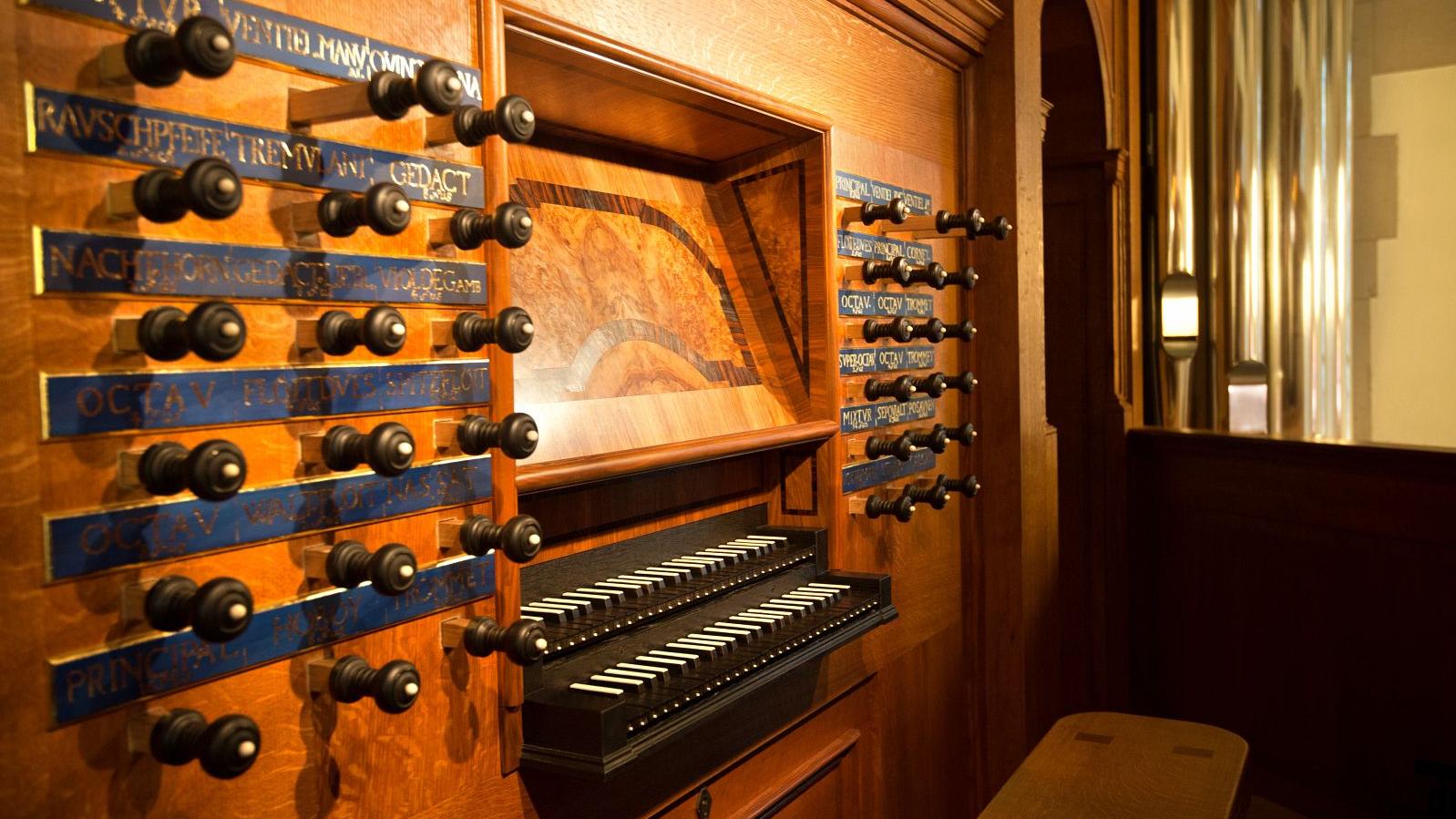Introduction
Around the same time in 2001 that Annette Richards, university organist, began thinking about a baroque organ for Cornell, the Goteborg Organ Art Center (GOArt) at the University of Gothenburg, Sweden, celebrated the first results of their recently-founded organ research workshop with the completion of a large 17th-century north German-style organ. "We began to hatch a plan for a big collaborative research project that would result in a great musical instrument for Cornell," says Richards. Munetaka Yokota, researcher and organ designer and builder at GOArt, provided artistic direction and oversaw the project, an interdisciplinary and international effort that eventually encompassed scholars, physical scientists, musicians, craftsmen and visual artists from Sweden, Japan, The Netherlands, Germany, the Eastman School of Music at the University of Rochester, and volunteers and professionals from the local community. Ithaca-based master woodworkers Christopher Lowe and Peter De Boer built the organ case entirely by hand, and the Canandaigua-based organ-building firm Parsons Pipe Organ Builders built the wind system and the key and stop action using authentic 18th-century techniques taught them by Yokota.
Tonal Design
The Cornell organists wanted to build an instrument appropriate to the music of Johann Sebastian Bach, but also to the great repertoire of older music that he had encountered during his youth. A difficult request, says designer Munetaka Yokota, because Bach had a strong connection to organs for most of his life. So you could easily find at least ten or fifteen styles of the organ that Bach was very familiar with. But when the organists asked for an organ that could play Buxtehude's music as well, Yokota's design choices narrowed. Fortunately, Arp Schnitger, one of Germany's greatest organ builders of the early 18th century, had designed an unusually eclectic instrument for the palace chapel at Charlottenburg, Berlin. This organ combined design features from northern and central Germany, a synthesis of styles that allowed a greater musical range than other organs of the period. After choosing the Charlottenburg organ for Cornell's design, Yokota realized he had a personal connection to the instrument. "This organ happened to be the first organ that I ever heard in my life," says Yokota. When he was fourteen, "sort of by accident" he bought a record that had been reconstructed from old 78 LPs recorded in 1933, before the Charlottenburg-Schlosskapelle organ was destroyed. For Yokota, listening to this recorded music was so striking that he's been devoted to organ music ever since.
The True Value of Noise
Throughout history, organ builders have striven for a steadier sound and to silence the noise of the key action. Modern organs have achieved this goal to a fault, according to Yokota. "Modern organs are easy to play and consistent," he says. "No matter what you do it sounds good. But they're missing the expressiveness old organs have." Music written for old instruments assumes a greater level of control over the sound than modern organs provide, as well as certain limitations modern instruments don't have. "Because modern organists don't have these limitations and experiences, they can't reflect how the music was written to be performed," says Yokota. "The sound and action and how old instruments play all goes together." It's virtually impossible to teach old techniques of playing on a modern organ since they don't respond the same way. That's why Cornell's baroque organ has such important pedagogical value. "You must have the organ giving feedback," says Yokota. "The organ itself is the best teacher."
Four centuries and beyond
"A great university deserves to have a really great organ," says Annette Richards, university organist. Although Cornell had a number of organs already, it lacked an instrument of the style and scope appropriate to the music of the noted German organist composers of the 17th and 18th centuries. "There was no great vehicle for playing the music especially of Johann Sebastian Bach and his North German predecessors. So I felt it was important for us to get a new really first class world class instrument at Cornell," says Richards. "Cornell is an institution that fosters many kinds of scholarship, and it also has a long and very storied musical tradition," continues Richards. "Andrew Dickson White was a big organ supporter and fan. He initiated getting an important organ for Bailey Hall when that building was built. "And Cornell's College of Arts and Sciences has a music department where the 18th century is a real strength. It also has a fine collection of keyboard instruments already, and it made sense to build on all those strengths and that history to bring something like this here.

